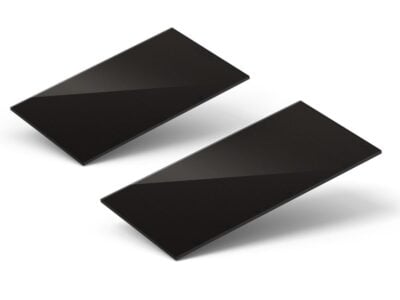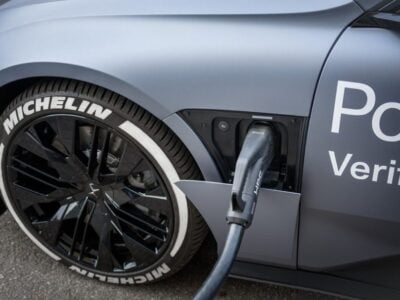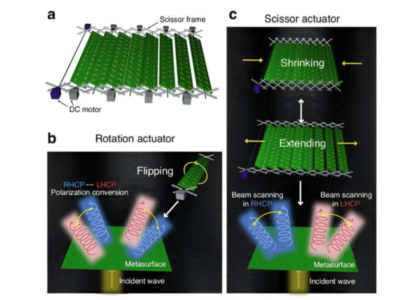Component selection and layout strategies for avoiding thermal EMF
Introduction
The increasingly small form factors of electronic systems and components have brought many benefits to users, but they also complicate the electronic design process. This is especially true when it comes to thermal management. While reducing component size might reduce the thermal gradients across any particular component, the closer proximity of components to one another and the greater concentration of heat in less space can create new problems.
One such problem is thermal electromotive force (Thermal EMF, or TEMF), which introduces an error-voltage signal in DC circuits. This article shows how to minimize thermal EMF by paying close attention to material and component selection, thermal management of critical areas, and proper circuit layout.
Basics of noise sources in low-level DC circuits
When designing a low-level DC circuit, it is necessary to keep the influence of noise sources to minimum. The externally induced sources are EMI and RFI. There are also several internally generated noises. Some of these are Johnson noise, current noise, shot noise, and popcorn noise. There is also vibration-induced EMF, triboelectric, and electrostatic noise.
In 1821, Thomas Seebeck discovered that when two wires made of dissimilar metals are joined at both ends and the opposing junctions thus created are maintained at different temperatures, a current will flow through the loop (Figure 1).

Figure 1: Seebeck effect generates current flow in the dissimilar wire loop
The magnitude of this current is proportional to three factors:
1. The temperature difference between the junctions at the two ends
2. Seebeck coefficients (proportionality measures based on different metals) of the two wire materials
3. The loop resistance
If one end of the loop is opened and a voltmeter is attached to the two wires (Figure 2), with the newly created meter-to-wire junctions kept at the same temperature as before, a voltage can be read on the voltmeter.

Figure 2: Opening the loop results in a voltage is proportional to the temperature difference at the two ends of the wires and to the difference between the Seebeck coefficients of the two wire materials.
This voltage is proportional to the temperature difference at the two ends of the wires and to the difference between the Seebeck coefficients of the two wire materials. Because the meter has a practically infinite input resistance, no current flows in the circuit and therefore produces no voltage drop in the wires, and the loop resistance is no longer a factor.
This is the basic principle of operation for thermocouple thermometers. The meter-side junction is kept at a fixed reference temperature (usually 0°C) by an ice bath or an electronic circuit simulating zero-degree conditions and the other end is at the heat source.
The Seebeck coefficient is also called “thermal electromotive force coefficient” or simply thermal EMF coefficient. Because it is very difficult to predict the thermal EMF coefficient of an alloy from its element composition, all the values for metals and alloys commonly used are obtained by measurement. Measurements are made by comparing the selected metal or alloy to a common reference metal such as platinum or copper. Thus, the thermal EMF coefficient for each metal is stated as referred to the same reference metal.
All thermal EMF coefficients are temperature dependent. The numbers given are averages between 0°C and 100°C. Except for very demanding applications, the small error generated by using these averages is negligible.
The unit of thermal EMF referring to copper or platinum is µV/°C. When the value of thermal EMF for a material referred to platinum is known, the value referred to copper can be calculated. This is done by subtracting the thermal EMF value for copper vs. platinum (7.6 µV/°C) from that same material’s thermal EMF value vs platinum. Similarly, the thermal EMF between any two metals can be found just by subtracting their individual thermal EMFs referenced against copper.
Design considerations
A host of metals, alloys, and metal composite conductors are used in electronic components. Some of these components, such as resistors and semiconductors, generate internal heat (which is known as self-heating or the Joule effect). Therefore it is very difficult to avoid thermal EMF generation in electronic circuits. However, good results can be achieved by paying close attention to material and component selection, thermal management of the critical areas, and proper circuit layout.
Another way of looking at thermal EMF is to imagine small batteries in series with every component. Each battery voltage would be equal to the temperature across each metal junction, times the thermal EMF coefficient defined for that junction’s materials.
There are several points to keep in mind when you’re designing low-level DC signal-processing electronic circuits. First, nearly 30 times more heat will be transmitted by the thin copper foil of a printed circuit board than by the glass-epoxy board itself. In low thermal-EMF circuit designs it is crucial to keep all junctions at the same temperature. This means designing the low-level and sensitive areas of the circuit in an isothermal island, where the temperature is kept even over the entire area.
It is as important to reduce the heat flowing into a junction as it is to reduce heat flowing out. Heat can flow into or out of a junction in three ways:
- first, by conduction through the copper foil or the component leads or terminations;
- second, by radiation from a hot component nearby;
- third, from forced or natural air convection within the housing.
As much as possible, low thermal EMF-generating materials and components should be used. Because of the close thermal-expansion match of Kovar alloy to glass, many electronic components are sealed using glass seams with Kovar terminations or eyelets leading to the outside. All hermetic-package leads are made from Kovar or from something very similar. Unfortunately, the thermal EMF coefficient of Kovar against copper is one of the highest among the alloys used in electronics (−35 µV/°C).
Analog sensor circuits have sensor outputs in the microvolt range; typically, this is about 5 µV. That voltage would normally be amplified up to a more-usable voltage level, typically about 5 volts, through a series of amplifiers headed by a differential amplifier.
However, if a component in the sensor circuit has just a 0.02°C temperature differential with a 35 µV TEMF coefficient, there would be a 0.7 µV error generated in the sense circuit, or about 14%. And since the TEMF voltage is impressed upon the sensed voltage ¾ not as a part of the carrier signal—it is not rejected in the common mode rejection (CMR) function of the differential amplifier. Similarly, when the TEMF is in the op amp section, the TEMF error is amplified along with the desired signal, and retains the same relative error.
Another key consideration is to have the leads of your precision components made from alloys which have sufficiently low and inconsequential thermal EMF. Since there are at least two interconnections inside the component, any thermal gradient within the component itself will generate an internal thermal EMF voltage. Anything that will cause thermal gradients in a component should be avoided.
Thermal gradients can also be caused by the improper dissipation of internally generated heat from the component. Some manufacturers provide good internal thermal EMF design. For example, the internal thermal EMF of VPG’s Bulk Metal® Foil resistors is specified to be less than 0.1 µV/°C.
It is always a good idea to shield or keep low-level circuits away from high-power areas. A cooling fan can heat an area as well as cool it because of the way air-convection currents set up within the electronic package.
Low power-consuming op amps and higher-resistance voltage dividers always work better in low-level circuits. In general, good results can be obtained if the resistance values are kept between 10 kΩ and 150 kΩ.
It is important to understand the sources of thermal EMF in resistors. Since resistor leads or terminations are usually made from a material which is different from the resistive material, thermal EMFs in these components are created by external sources of heat, or by heat generated when power is applied to a resistor, or by both effects. In a resistor comprised of two leads or wraparound terminations to a resistive element, the thermal EMF voltage polarities at either end of the resistor oppose each other. If the ends are at different temperatures, this generates an error voltage that affects the DC circuits.
If the two points on the printed circuit board, where the resistor leads or SMD terminations are connected, are at different temperatures, the heat flow through the resistor will create temperature gradients inside the resistor. As a consequence, a differential thermal EMF will be created. Its magnitude will depend on the materials used, the construction of the resistor, and the temperature difference between the leads or terminations ∆T.
The resistor’s internal connections can also see different temperatures due to other external sources of heat, such as radiation from neighboring devices or air currents. The magnitude of the above effects is expressed in microvolts per degree centigrade.
Another source of thermal EMF is the heat generated when power is applied to a resistor. Due to the dissymmetry of power distribution over the resistor surface and dissymmetry in heat conducting paths, the internal joints will see different temperatures, giving rise to thermal EMFs. In this case, the magnitude will depend on power applied and is expressed in microvolts for a given power level.
Of course, all the sources of Thermal EMF can be additive.
Different resistor types have different thermal EMF properties, as shown in the graph below, which compares thermal EMF performance for foil, thick film, and two metal-strip technologies. The graph (Figure 3) shows thermal EMF versus time when the same low-level thermal gradient is induced across each of four SMD 2512 size 0.05-Ω resistors.


Figure 3: The thermal EMF result for foil, thick film, and two metal-strip technologies, each with the same induced thermal gradient.
Conclusion
Reducing circuit area introduces new design challenges associated with thermal management and its unintended consequences. Thermal ElectroMotive force (TEMF) introduces error voltages wherever temperature differentials exist at the junction of two dissimilar metals, such as where internal resistive elements are joined to the external terminations of a resistor.
Temperature differentials are developed across a resistor from uneven internal power dissipation, terminations heated by heat-radiating components, and from thermal dissipation paths running along the circuit board in both the conductive paths and the base board material itself. The foil, which was originally devised specifically for its innate TCR and its linear coefficient of expansion, also has a very low TEMF of only 0.05 to 3 µV/°C, depending upon the configuration.
To achieve the optimum results in analog-circuit designs from a thermal EMF point of view:
- Locate DC circuits in an area of constant temperature.
- Use low thermal EMF components, such as Bulk Metal Foil resistors.
- Dissipate the internally-generated heat of the component in a way that reduces thermal gradients.
- Avoid convection and heat-radiation effects in DC areas.
- Use low-power components.
About the author

 Yuval Hernik holds a B.Sc. in electrical engineering from the Technion (Israel Institute of Technology). He has been a director of application engineering at Vishay Precision Group–Bulk Metal Foil resistors since 2008.
Yuval Hernik holds a B.Sc. in electrical engineering from the Technion (Israel Institute of Technology). He has been a director of application engineering at Vishay Precision Group–Bulk Metal Foil resistors since 2008.
 If you enjoyed this article, you will like the following ones: don't miss them by subscribing to :
eeNews on Google News
If you enjoyed this article, you will like the following ones: don't miss them by subscribing to :
eeNews on Google News




